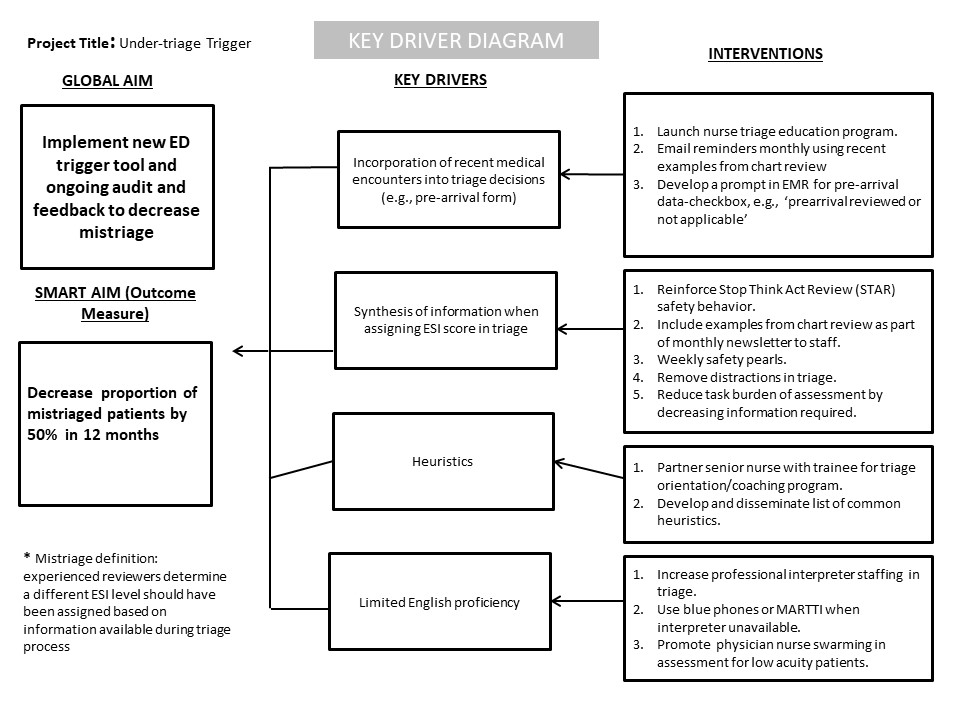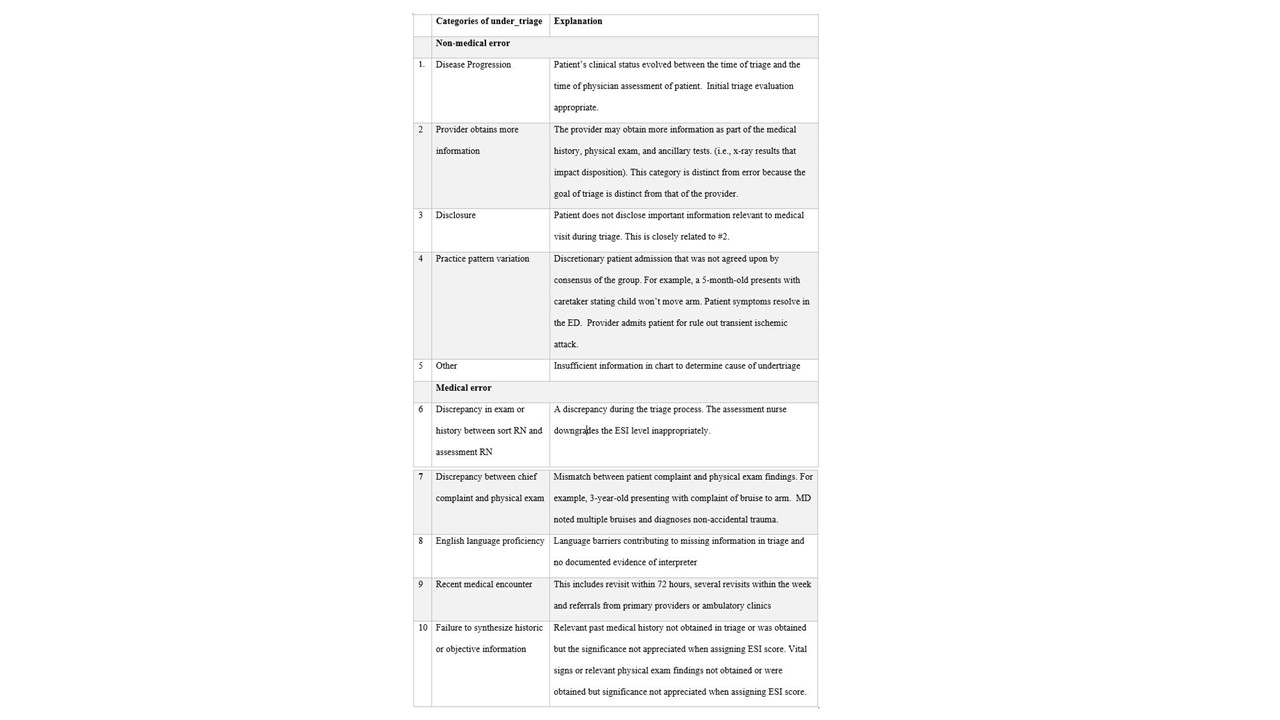Emergency Medicine: Quality Improvement
Category: Abstract Submission
Emergency Medicine XV
69 - Under-triage: A New Trigger to Drive Quality Improvement in the Emergency
Monday, April 25, 2022
3:30 PM - 6:00 PM US MT
Poster Number: 69
Publication Number: 69.408
Publication Number: 69.408
Deena Berkowitz, Children's National Health System, Silver Spring, MD, United States; Katharine C. Button, Children's National Health System, Washington, DC, United States; Haroon Shaukat, Children's National Health System, Washington, DC, United States; Michele K. Stevenson, Childrens National Hospital, Waldorf, MD, United States; Deborah K. LaViolette, Children's National Health System, Washington, DC, United States; sephora morrison, Children's National Hospital, Washington, DC, United States; Kerri A. Gallagher, Childrens National Medical Center, Annapolis, MD, United States; Yael Meisler, Children’s National Hospital, Silver Spring, MD, United States; James Chamberlain, Children's National Health System, Washington, DC, United States

James Chamberlain, MD (he/him/his)
Professor
Children's National Health System
Washington, District of Columbia, United States
Presenting Author(s)
Background: The emergency department (ED) is a care setting with high risk for medical error.
Objective: To demonstrate how a new trigger, under-triage, can be implemented to detect and reduce medical error in the ED.
Design/Methods: We defined under-triage as patient visits in which the patient was assigned an Emergency Severity Index (ESI) score of 4 or 5 (i.e., low acuity) and in which the patient was admitted to the hospital during the same visit. We defined mistriage, or medical error, when nurse-physician dyad reviewers determined that a different ESI level should have been assigned based on the information available at the time of triage. A multidisciplinary team used nominal group technique to build consensus on the key drivers and outcome metrics for this new trigger. We randomly selected 367 charts for review utilizing the under-triage trigger.
Results: Of the 125,457 patients triaged as Level 4 or 5 in calendar years 2019 and 2020, 1,423 1.1% were under-triaged. Of the 367 charts reviewed, 127 were categorized as mistriage, making the positive predictive value (PPV) of the undertriage trigger 48%. Reviews took 2-10 minutes per chart. Ten categories of under-triage were identified. Nine themes emerged with four specific and measurable action items which mapped to process and outcome metrics.Conclusion(s): We identify a new, feasible ED trigger, under-triage, that identifies medical error with high positive predictive value. We identify process and outcome metrics and interventions with which to improve triage for future patients.
Under-Triage Key Driver Diagram
Categories of Under-Triage
Objective: To demonstrate how a new trigger, under-triage, can be implemented to detect and reduce medical error in the ED.
Design/Methods: We defined under-triage as patient visits in which the patient was assigned an Emergency Severity Index (ESI) score of 4 or 5 (i.e., low acuity) and in which the patient was admitted to the hospital during the same visit. We defined mistriage, or medical error, when nurse-physician dyad reviewers determined that a different ESI level should have been assigned based on the information available at the time of triage. A multidisciplinary team used nominal group technique to build consensus on the key drivers and outcome metrics for this new trigger. We randomly selected 367 charts for review utilizing the under-triage trigger.
Results: Of the 125,457 patients triaged as Level 4 or 5 in calendar years 2019 and 2020, 1,423 1.1% were under-triaged. Of the 367 charts reviewed, 127 were categorized as mistriage, making the positive predictive value (PPV) of the undertriage trigger 48%. Reviews took 2-10 minutes per chart. Ten categories of under-triage were identified. Nine themes emerged with four specific and measurable action items which mapped to process and outcome metrics.Conclusion(s): We identify a new, feasible ED trigger, under-triage, that identifies medical error with high positive predictive value. We identify process and outcome metrics and interventions with which to improve triage for future patients.
Under-Triage Key Driver Diagram

Categories of Under-Triage

